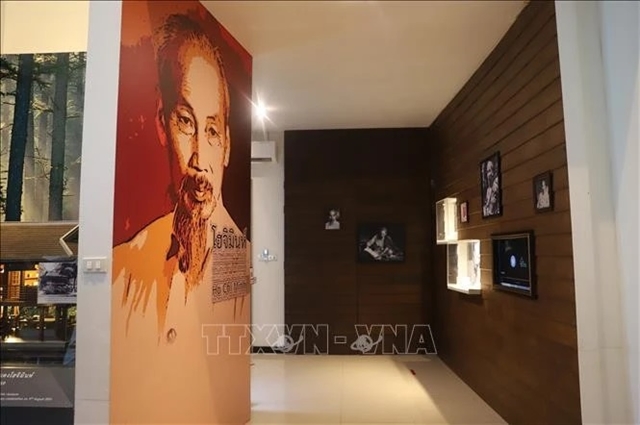Phuri Hong Thong, the museum's manager, said that since its opening, the facility has become a prominent cultural tourism and educational destination in Phichit province, attracting diverse visitors from both Thailand and abroad.

A corner of the Bản Đông Hồ Chí Minh Museum in Phichit province, Thailand VNA photo
HÀ NỘI – Bản Đông Hồ Chí Minh Museum stands as a unique historical landmark in Thailand’s Phichit province, around 350 kilometres to the north of Bangkok, preserving the legacy of the Vietnamese revolutionary leader during his time in the country.
The museum, inaugurated in 2018, is one of the three historical relic sites dedicated to President Hồ Chí Minh in the land of the “golden pagodas”. Notably, it is the only facility fully funded and constructed by the Thai government and local administration, demonstrating the time-honoured friendship between the two countries.
Designed by the Faculty of Architecture, Art and Design under the Naresuan University in Phitsanulok province, the museum embraces contemporary and visitor-friendly principles. It spotlights the Việt Nam - Thailand relations and President Hồ Chí Minh’s role as a Vietnamese liberation hero as well as his activities in Siam (Thailand’s former name).
Having seen the museum as a symbol of the bilateral ties, the Phichit administration has paid due attention to the maintenance, upgrade and expansion of the site.
Phuri Hong Thong, the museum's manager, said that since its opening, the facility has become a prominent cultural tourism and educational destination in Phichit province, attracting diverse visitors from both Thailand and abroad. The museum has revived its activities following COVID-19, including plans to restart the "following President Hồ Chí Minh's footsteps" mini-marathon in 2025 to raise public awareness of the revolutionary hero’s life and activities in Thailand.
Vietnamese Ambassador to Thailand Phạm Việt Hùng expressed his impression of the museum’s scientific presentation, with exhibits introduced in Vietnamese, Thai, and English, chronicling President Hồ Chí Minh’s revolutionary activities in Thailand while giving a deeper insight into the local culture and history as well as the time-tested friendship between the two nations.
The museum has also engaged the Vietnamese-Thai people, authorities, and private organisations in preserving and promoting the late Vietnamese leader’s legacy as well as the historical values of the local community.
Vice President of the Vietnamese People General Association in Thailand Lê Viết Trọng commended the locals’ dedication to build the museum, helping the Vietnamese-Thai nationals like him have a better understanding of President Hồ Chí Minh’s journey towards national liberation. VNA/OVIETNAM